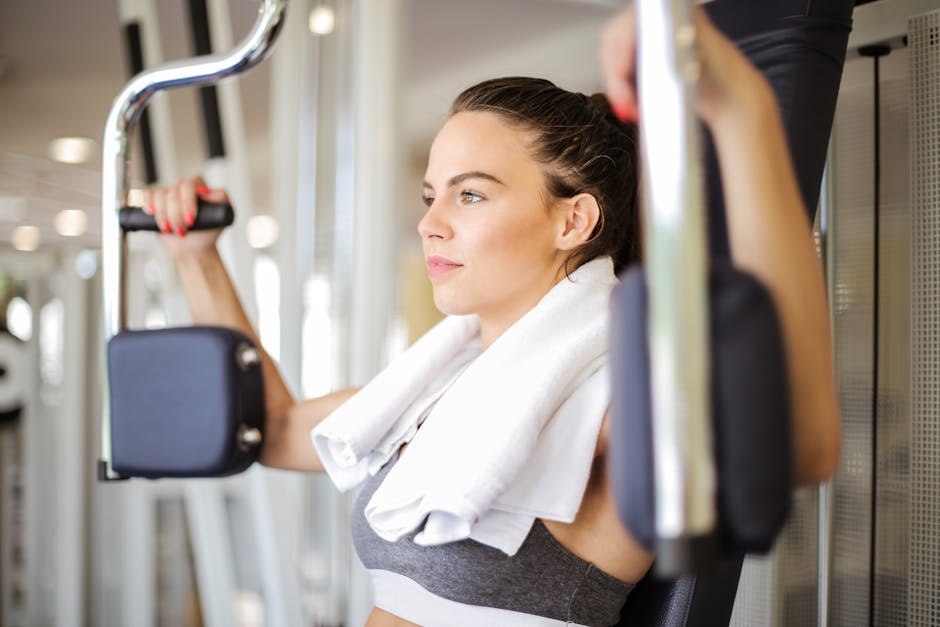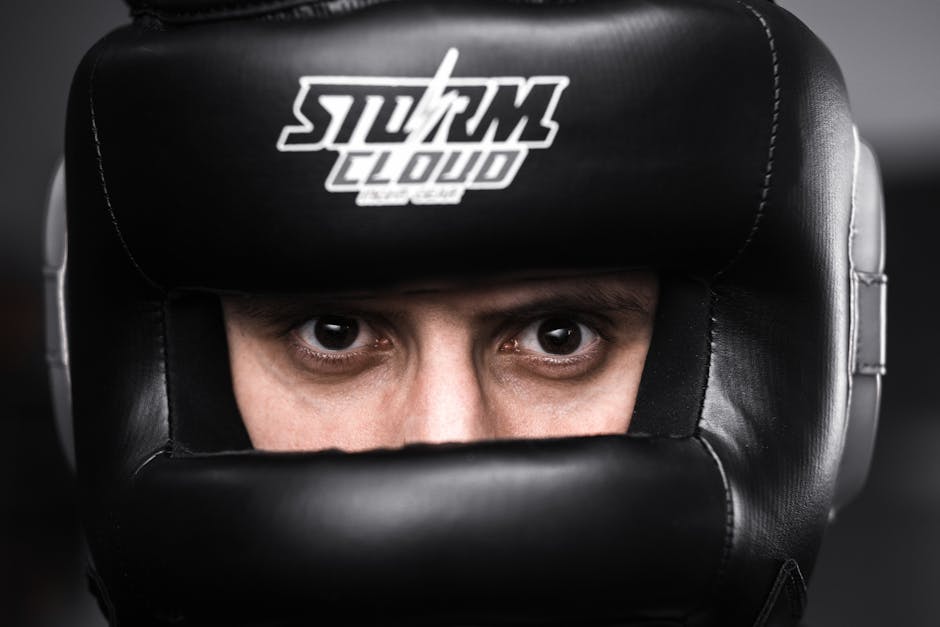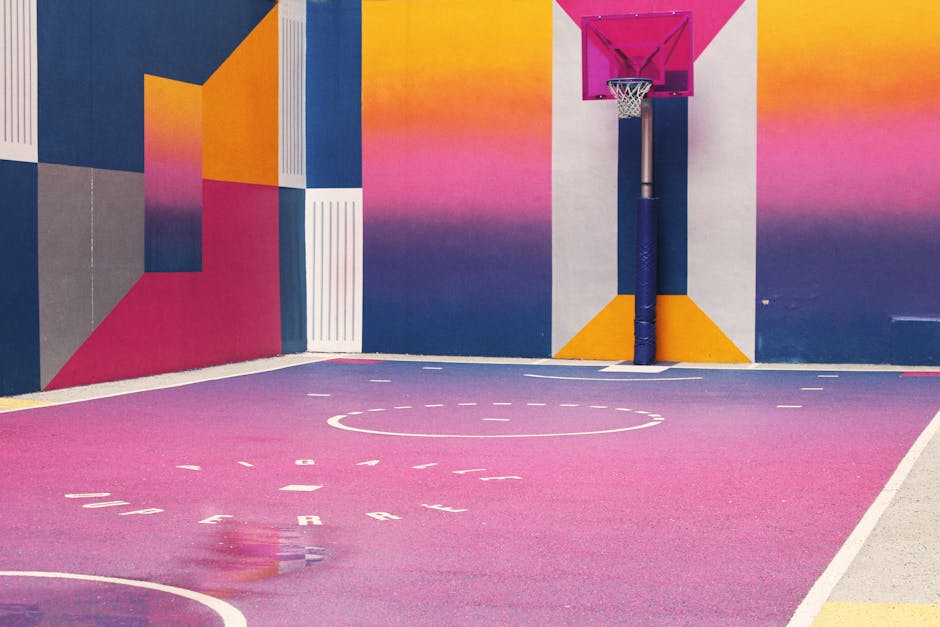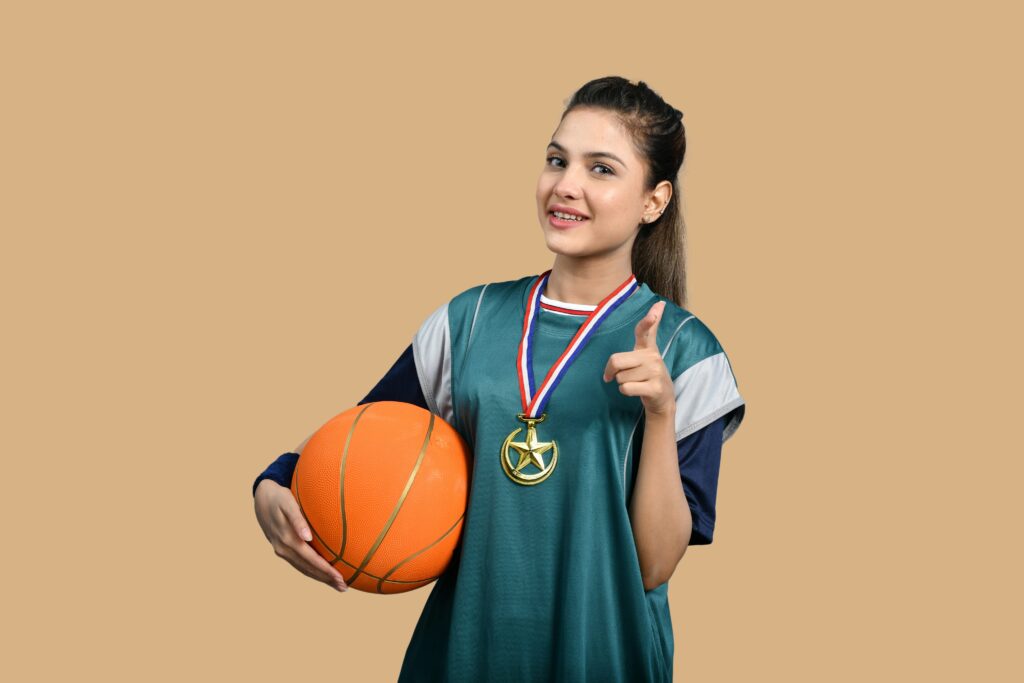Intro: What Sets the Best Apart
When it comes to top-tier athletes, discipline isn’t a bonus—it’s the entry fee. The early alarms, the back-to-back workouts, the skipped shortcuts. None of that happens because they feel like it. It’s the routine. The grind. When everyone else checks out, champions double down. That’s the line between wanting it and living it.
Talent makes a great story, but consistency builds legacies. The real edge isn’t always in raw ability—it’s in who shows up every day and gets the reps in. Over time, that stacks up. While others wait for motivation to strike, the best rely on systems, not sparks.
In this breakdown, we’ll strip back the hype and look at what really fuels elite performance. From foundational strength work to targeted recovery, mental sharpness to nutritional precision, we’ll cover the habits that make greatness less a mystery—and more a method. Whether you’re chasing a podium or just leveling up your personal best, these principles apply.
Strength Training: The Foundation
Forget the circus moves and flashy machines—strength starts with the basics. Core lifts like squats, deadlifts, and presses aren’t just for powerlifters or bodybuilders. They’re the backbone of nearly every elite athlete’s program, from sprinters to swimmers to quarterbacks. These compound movements build full-body power, reinforce joint integrity, and develop the kind of transferable strength that shows up in real-world performance. If you can deadlift cleanly and squat deep with control, you’re building a foundation other training can stack on.
In 2024, it’s not about looking jacked in the mirror—it’s about functional power. Training needs to support movement patterns, not just flex for the camera. That means prioritizing mobility, joint stability, and strength that translates to on-field or in-game output. Rotational strength. Explosive hips. A spine that holds up under pressure. These matter more than mirror biceps or an inflated bench press PR that doesn’t carry over to sport.
Here’s what a typical athlete-focused training week might look like:
Monday: Heavy squat variation + core + sled pushes Tuesday: Upper-body push/pull + mobility circuit Wednesday: Recovery/mobility day or light tempo work Thursday: Deadlift or hinge-focused day + single-leg stability work Friday: Explosive lifts (cleans/snatches) + contrast training Weekend: Sport-specific movement skills, light cardio or rest
This isn’t about doing everything—it’s about doing the right stuff, consistently and with intent. Build strength that lasts. Build it from the ground up.
Conditioning: Not Just Cardio
Elite athletes don’t just run laps or ride bikes to stay in shape—their conditioning programs are intensely strategic and highly tailored to their sport. Whether they’re training for short bursts of explosive speed or long-lasting endurance, top performers use data, science, and discipline to fine-tune every second of their output.
Explosive Intervals vs. Endurance Blocks
Conditioning isn’t a one-size-fits-all solution. Most athletes alternate between two broad training styles depending on performance goals:
- Explosive Intervals
- High-intensity bursts: sprints, sled pushes, battle ropes
- Ideal for speed-based sports like football, basketball, or MMA
- Focus: enhancing power output, reaction time, and fast-twitch muscle activation
- Endurance Blocks
- Sustained, lower-intensity efforts: long-distance runs, swimming, rowing
- Valuable for athletes in endurance-heavy disciplines like marathon running or cycling
- Focus: aerobic efficiency, mental stamina, and muscular fatigue resistance
Sport-Specific Conditioning: Train to Compete, Not Just to Sweat
Different sports require different engines. Conditioning is adjusted not just for fitness, but for function:
- Sprinters work on maximum velocity and acceleration in short efforts, often under 30 seconds
- Soccer players focus on recovery between high-intensity bursts, covering up to 10 kilometers per game at varied intensity
- Boxers train for explosive output and cardiovascular recovery across multiple rounds with short rests
This type of conditioning reflects game reality, helping athletes perform in a way that mirrors competition demands.
VO₂ Max and Lactate Threshold: Breathing Like a Pro
The finest athletes treat their cardiovascular systems like precision machines. Two key bio-markers get extra focus:
- VO₂ Max – Maximal Oxygen Uptake
- Measures how efficiently the body uses oxygen during high-effort conditioning
- Trained using repeated intervals above the anaerobic threshold, such as 4-minute hard runs with short recoveries
- Lactate Threshold
- The point at which lactic acid rapidly accumulates in the muscles, leading to fatigue if unmanaged
- Raised through tempo runs, threshold circuits, or zone-based bike workouts
Together, these two metrics tell athletes how long and how hard they can sustain elite-level output.
Conditioning isn’t simply cardio. It’s where science meets grit—and where champions are built down to the cellular level.
Skill Work: Precision Over Volume
Mastery in sports isn’t just about putting in the hours—it’s about how those hours are used. While you’ve probably heard of the “10,000-hour rule,” elite athletes know it’s not just volume that matters, but precision, consistency, and targeted improvement.
The Truth About the 10,000-Hour Myth
The idea that success automatically comes after logging 10,000 hours of practice has its appeal, but for top performers, time alone isn’t the asset—quality is.
- Not all practice is equal
- Mindless repetition can lock in bad habits
- High-performing athletes rely on continuous feedback and data-driven training
Instead of counting hours, top athletes focus on deliberate practice—where each rep is intentional, measured, and corrected.
Drills That Target Micro-Improvement
Elite training programs are built on drills that zoom in on specific movement patterns, reactions, or decision-making cues. These small tweaks add up over time.
- Tennis pros working foot placement drills to shave milliseconds off return time
- Swimmers fine-tuning hand entry angles to improve efficiency per stroke
- Basketball players simplifying shot mechanics under pressure conditions
These drills aren’t glamorous—but they build the kind of performance that holds up under competition.
Inside Elite Daily Routines
Top athletes often split their day into multiple sessions, with skill work intentionally placed when focus is highest—often in the morning, post-recovery.
Example: A Day in the Life (Skill-Focused Block)
- 7:30 AM: Mobility + neuromuscular warm-up
- 8:00 AM: Primary skill session (precision drills + real-time feedback)
- 11:00 AM: Video review and coach debrief
- 4:00 PM: Secondary skill session or situational scrimmage
This kind of structure ensures that skill refinement stays central—not lost within other physical demands.
Pro-level routines reflect one key principle: don’t waste a rep. Every touch, step, and movement is purposeful.
Recovery: The Silent Advantage
Recovery isn’t the break you earn—it’s the edge you build. Top athletes don’t just rest between workouts. They schedule sleep like training sessions. Circadian alignment—getting deep sleep at consistent hours—is now treated as performance tech. No more mindless scrolling at midnight. Consistency in sleep-wake cycles boosts hormone balance, reaction time, and even motivation. Simple? Yes. But most still don’t do it.
Then there’s active recovery. This isn’t lounging around—it’s movement with intent. Mobility drills, low-intensity cardio, and targeted bodywork flush your system without adding load. Cold plunges have moved beyond trend status. Controlled cold exposure lowers inflammation, resets the nervous system, and helps drive faster bounce-back between sessions. The pros aren’t doing it for clicks. They’re doing it because it works.
Athletes are also getting smarter about managing fatigue. That starts with tracking. HRV, resting heart rate, perceived exertion—all useful signals. The goal: stay just short of breakdown. Anti-inflammatory protocols (think turmeric, compression, strategic deloads) keep the system primed, not fried. Taking time off isn’t weak—it’s how you make progress without tanking your engine.
Recovery isn’t passive. It’s the training you don’t see.
Nutrition: Fuel Like a Pro
You can’t out-train a bad diet, and the best athletes know that. When it comes to performing under pressure and recovering fast, timing your macronutrients isn’t just helpful—it’s non-negotiable. Carbs are frontloaded around training windows to fuel intensity and restore glycogen. Protein is spaced consistently to support muscle repair and retention. Fats are usually kept moderate around workouts, then elevated in rest periods to support hormone balance and recovery.
Supplements? Only the ones that actually hold up under scrutiny. Creatine monohydrate is a staple—it’s been tested more than most prescription drugs and supports power output and recovery. Omega-3s play a solid role in managing inflammation and joint health, especially for contact sports. Electrolytes aren’t trendy; they’re foundational, especially when workouts go long or sweaty. Athletes don’t guess—these are dialed in with blood panels and baseline testing.
Here’s what a typical training-day meal setup can look like for an Olympic-level athlete:
- Breakfast (90 min pre-training): Oats, banana, whey protein, almond butter
- Post-training shake: Whey isolate, dextrose or fruit, electrolytes
- Lunch: Grilled chicken, sweet potatoes, avocado, mixed greens
- Afternoon snack: Greek yogurt, berries, flaxseed
- Dinner: Salmon, quinoa, roasted vegetables, olive oil drizzle
- Before bed: Casein protein or cottage cheese, optional magnesium supplement
It’s not about eating clean. It’s about eating smart—right nutrients, right timing, every day.
Mental Conditioning: The Edge That Can’t Be Measured
Physical strength and technical skill may be visible, but the mental game is where elite performance is truly won. Top athletes understand that mindset is a muscle—one that needs daily training and deliberate reinforcement.
Visualization: Prepping the Mind for Victory
Mental imagery isn’t just pseudoscience—it’s a proven tool for performance. Athletes visualize every detail of competition, from the sequence of movements to the sound of the crowd. Done correctly, visualization activates similar neural pathways as physical practice.
- Mental rehearsal of plays, movements, or match scenarios
- Repeating visualizations before big events to reduce anxiety
- Athletes like Michael Phelps and Simone Biles credit visualization as a core mental weapon
Mindfulness and Focus Drills
Staying present under pressure separates elite athletes from the field. Incorporating mindfulness into training helps reduce performance anxiety and improves clarity in fast-paced environments.
- Breathwork and focus resets during practice sessions
- Meditation or focused mindfulness breaks between physical training
- Tools like journaling and gratitude exercises to maintain mental clarity
Sports Psychologists: Building Mental Resilience
More athletes are openly working with sports psychologists—not because they’re weak, but because they’re optimizing. These professionals help structure focus, address mental fatigue, and assist in managing stress before high-stakes performances.
- Regular sessions to develop personalized mental strategies
- Support for coping with setbacks, slumps, and public pressure
- Cognitive-behavioral training to reframe negative thinking patterns
Rituals That Lock In Game-Day Focus
Routines don’t just calm nerves—they signal the brain that it’s time to perform. From specific warm-up habits to music playlists, rituals are designed to cue focus and block distractions.
- Consistent pre-game sequences (e.g., same warm-up drill order or walkout playlist)
- Small actions with symbolic meaning (e.g., buttoning a jersey the same way)
- Mental anchors: phrases or visual cues that switch the brain into performance mode
Mental training isn’t about being perfectly calm—it’s about being prepared. In 2024 and beyond, the mental edge may be the most important one an athlete can sharpen.
Insights from the Pros
What do top-performing athletes—from Olympians to world champions—have in common? While their sports and skill sets may differ, patterns begin to emerge when you listen closely to what they say and how they train.
Common Trends in Elite Training Mindsets
Across interviews with top competitors, several key themes recur. These are habits and mindsets that cross boundaries of sport, nationality, and discipline:
- Commitment to Mastery: Top athletes don’t just practice—they pursue precise execution and constant improvement. Obsession, not just repetition, sets them apart.
- Structured Adaptability: Training plans are rigid in discipline but flexible in design. Elite athletes regularly adjust based on feedback, progress, and goals.
- High-Performance Routines: Success comes from systems: morning habits, pre-game rituals, sleep hygiene, and dedicated recovery rhythms show up time and again.
- Discomfort as a Training Tool: The best athletes don’t avoid hard work—they actively seek challenges that break past plateaus, mentally and physically.
- Relentless Focus on the Controllable: Rather than obsessing over outcomes, they train attention on what they can control—effort, attitude, preparation.
Universals Across Different Sports
While specifics differ—what a sprinter does daily looks nothing like a golfer’s prep—the psychological patterns often align:
- Goal Precision: Clear, short-term goals feed long-term achievement.
- Resilience Training: High-level competitors actively develop coping mechanisms to bounce back quickly from setbacks.
- Team Behind the Talent: From coaches to nutritionists to sports psychologists, pros build a support network that multiplies their individual output.
Want to go deeper? Read the full athlete interviews here: Inside The Minds of Champions
Closing: Train Smarter, Not Just Harder
You don’t need a gold medal to train like someone who’s chasing one. The core lessons from top athletes strip down easily into everyday use. Show up. Set a plan. Stick to it longer than feels comfortable. That’s the starting point, whether you’re prepping for a marathon or just trying to stop quitting halfway through your workout app.
Forget overnight transformations. The best chase long-term gains. They stack small wins, not highlight reels. It’s about adding five pounds to a lift over two months or getting one more hour of quality sleep each night. Marginal gains, multiplied.
If there’s a final takeaway, it’s this: be consistent, prioritize recovery, and keep your mental game sharp. That’s the playbook, whether you’re an Olympian or someone squeezing in movement between meetings. Physical resilience starts with repetition. Mental resilience comes from doing the work, regardless of how you feel.
You don’t need to be elite. You just need to keep going.




